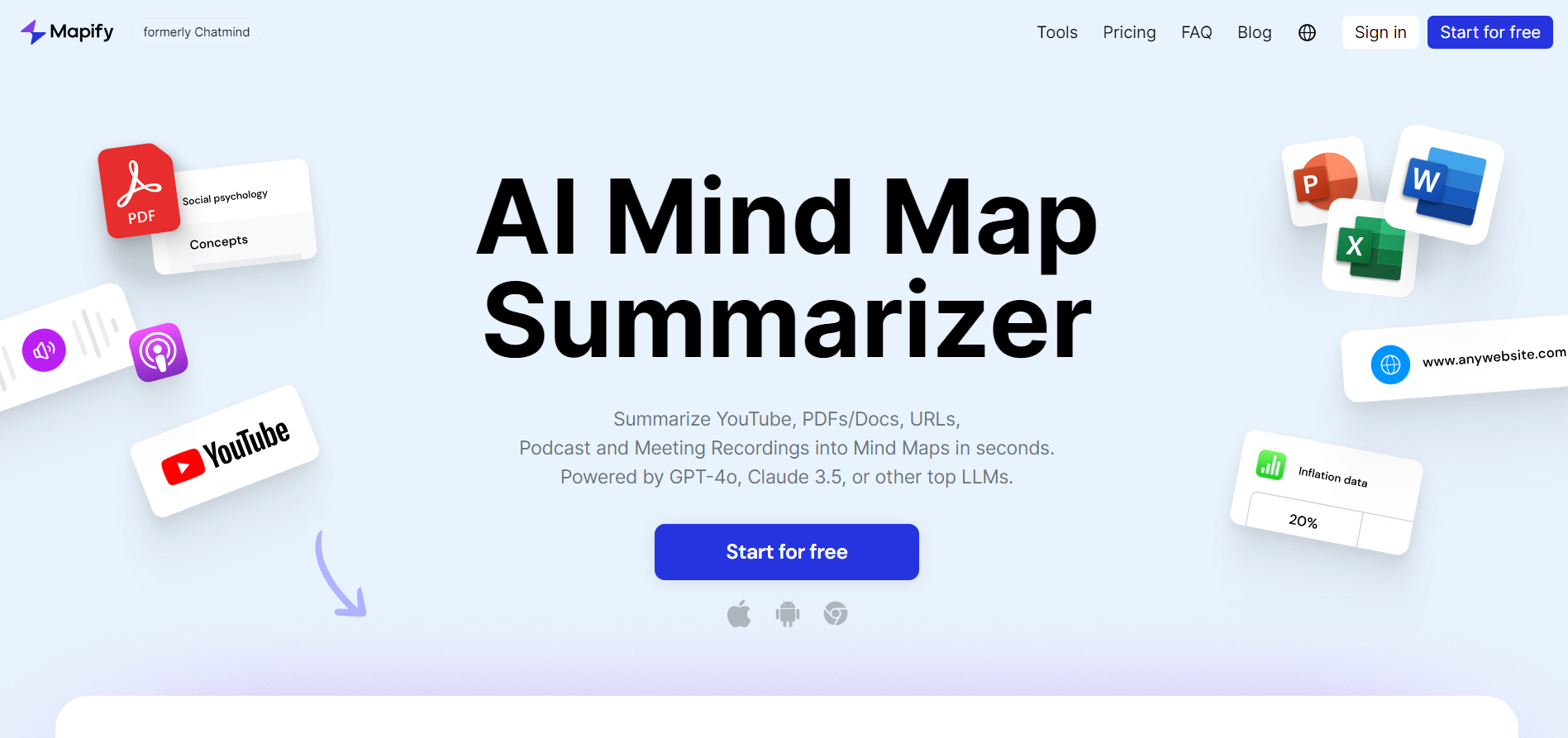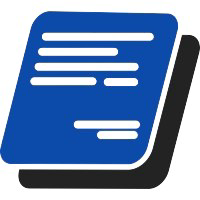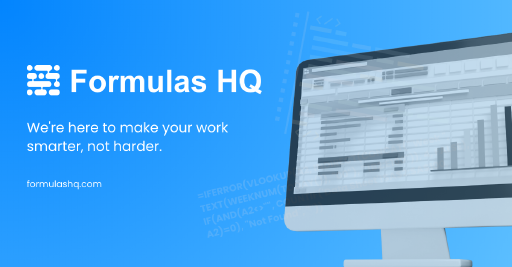Overview
Mapify is an innovative AI-powered mind-mapping tool that transforms a wide array of content types into structured, visually appealing mind maps. Designed to cater to the needs of students, professionals, and creatives, Mapify excels in breaking down complex information from sources like PDFs, Word documents, PowerPoint presentations, and YouTube videos into easily digestible formats. This functionality is particularly beneficial for users looking to summarize and analyze large volumes of data efficiently.
One of the key features of Mapify is its advanced AI capabilities, which swiftly extract essential ideas from extensive documents or multimedia files to create clear and concise mind maps. Additionally, the tool enhances user interaction through real-time AI conversations, allowing for dynamic modification and expansion of the mapped concepts. Mapify also supports real-time web access, enabling users to integrate the most current data directly into their mind maps, ensuring that the information remains relevant and up-to-date.
Moreover, Mapify includes innovative features like text-to-image generation, adding a creative visual dimension to the mind maps. This feature, along with its adaptability across various scenarios—from academic note-taking to business project planning—makes Mapify a versatile and powerful tool for organizing and visualizing information.
Key features
- Content type conversion: Mapify converts PDFs, Word documents, PowerPoint presentations, and YouTube videos into structured mind maps, enhancing information digestibility.
- Idea extraction technology: Utilizes AI to extract key concepts from extensive documents and media, quickly creating clear and organized mind maps.
- Interactive AI conversations: Allows users to engage in real-time discussions with AI to refine and expand mind maps based on evolving ideas or insights.
- Real-time web integration: Supports the incorporation of the latest web data directly into mind maps, ensuring up-to-date information flow and relevance.
- Text-to-image generation: Enhances mind maps visually by converting text descriptions into compelling images, making complex information more accessible and engaging.
- Versatile application support: Adapts to various scenarios from educational purposes, like summarizing lecture notes, to business uses, such as strategic project planning.
 Pros
Pros
- Collaborative editing: Enables multiple users to work on the same mind map simultaneously, fostering teamwork and improving project coordination.
- Customizable templates: Offers a variety of pre-designed templates that users can customize to fit their specific needs, saving time and enhancing creativity.
- Accessibility features: Includes options for text resizing, color contrast adjustments, and voice narration to accommodate users with different accessibility needs.
- Cloud-based storage: Allows users to save their mind maps in the cloud, providing easy access from any device and ensuring data is backed up and secure.
- Integration with productivity tools: Seamlessly connects with tools like Google Drive, Slack, and Trello, streamlining workflow and communication.
 Cons
Cons
- Complex interface: Mapify's numerous features and advanced AI capabilities can be overwhelming for new users, requiring a steep learning curve.
- Dependence on connectivity: Real-time web integration and AI conversations necessitate continuous internet access, limiting offline usability.
- AI interpretation errors: While extracting ideas, the AI might misinterpret nuanced or complex content, leading to inaccurate mind maps.
- Limited customization options: Users may find the visual and structural customization options for mind maps insufficient for highly specific needs.
- Resource intensive: The advanced features of Mapify, like text-to-image generation, may demand significant system resources, affecting performance on older devices.

















